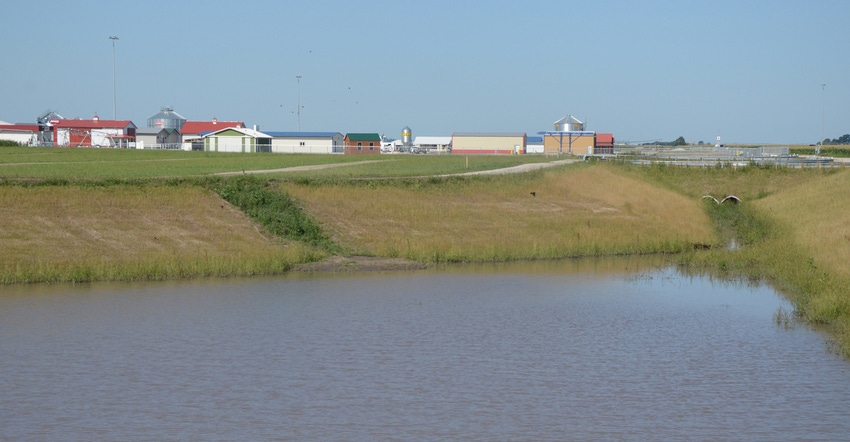
Last year, the Husker Harvest Days show site received a $7.5 million face-lift, including 5.5 miles of newly paved streets, 1.5 miles of security fence, five 90-foot-tall Musco light towers, 39 75-kilovolt-amp transformers, 34 miles of new electrical wiring and a brand-new drainage system.
This newly revamped drainage system included about 3.5 miles of storm sewer pipe, 16 feet of grade change from the west end to the east end of the show site, and more than 13 million gallons of stormwater detention volume with the new retention pond built on the northeast side of the site.
This spring, the new drainage system got its first big test when heavy downpours, snowmelt and runoff led to major flooding across the state.
"I cannot imagine how bad it's been for the people that have been impacted by this spring's flood events,” HHD show manager Matt Jungmann says. “I can't imagine what the Husker Harvest Days site would have looked like after seeing what I saw from drone footage in Nebraska right after the floods. It stood up amazingly well. Other than a little bit of erosion near one of the retention pond outlets, it was extremely minor compared to what the rest of Nebraska went through. The site withstood the flooding very well."
There was enough flooding in the immediate area that local agribusinesses have used the site to store equipment away from the flood — and are continuing to do so in more recent flood events in July.
"Aurora Co-Op has a location alongside the Wood River, and they were worried the floodwater was going to carry anhydrous tanks away," Jungmann says. "They asked us if they could use the show site, and within hours they lined all the streets with those anhydrous tanks, because the facility was high and dry and it was a place they could safely store them."
Hall County may not have received as much rainfall as other parts of the state, but it received more than 4 inches March 13-14. Jason Luebbe, host farmer at HHD, notes that combined with snowmelt upstream and runoff from the frozen ground, this made planting difficult at the show site.
The fields at the show site were flooded, with a wide range in soil moisture conditions and temperatures, making planting a challenge, Luebbe says. During the peak of the flooding, water ran across the parking lots and out of the banks of a nearby drainage ditch. However, the lots and roads on the exhibit field were dry before the floodwaters began to go down.
"We haven't gotten close to maxing out the holding capacity of the detention cell,” Luebbe says. “Even this spring, when we had a lot of water running in there, it might have been three-quarters full, and that was it. I guarantee we would have had possibly almost a foot of water over that whole show site in the exhibit field itself if it weren't for the drainage system. There would have easily been water in some of the buildings. There would have been major road damage and erosion problems."
About the Author(s)
You May Also Like






